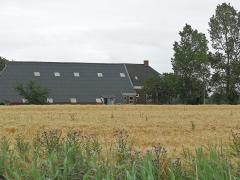Trend analysis from 1970 to 2008 and model evaluation of EDGARv4 global gridded anthropogenic mercury emissions
The Emission Database for Global Atmospheric Research (EDGAR) provides a time-series of man-made emissions of greenhouse gases and short-lived atmospheric pollutants from 1970 to 2008. With an average annual growth rate of 1.3% since 1970, EDGARv4 estimates that the global mercury emissions reached 1287 tonnes in 2008. The artisanal and small-scale gold production, accounted for approximately half of the global Hg0 emissions in 2008 followed by combustion (29%), cement production (12%) and other metal industry (10%).
The comprehensive ex-post analysis of the mitigation of mercury emissions by end-of-pipe abatement measures in the power generation sector and technology changes in the chlor-alkali industry over four decades indicates reductions of 46% and 93%, respectively. Combined, the improved technologies and mitigation measures in these sectors accounted for 401.7 tonnes of avoided mercury emissions in 2008.
A comparison shows that EDGARv4 anthropogenic emissions are nearly equivalent to the lower estimates of the United Nations Environment Programme (UNEP)'s mercury emissions inventory for 2005 for most sectors. An evaluation of the EDGARv4 global mercury emission inventory, including mercury speciation, was performed using the GEOS-Chem global 3-D mercury model. The model can generally reproduce both spatial variations and long-term trends in total gaseous mercury concentrations and wet deposition fluxes.
Open Access article
Authors
Specifications
- Publication title
- Trend analysis from 1970 to 2008 and model evaluation of EDGARv4 global gridded anthropogenic mercury emissions
- Publication date
- 28 July 2014
- Publication type
- Publication
- Magazine
- Science of the Total Environment
- Product number
- 1556




